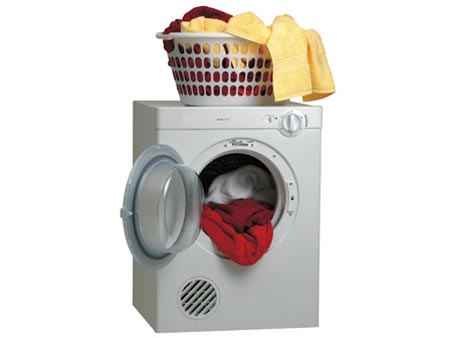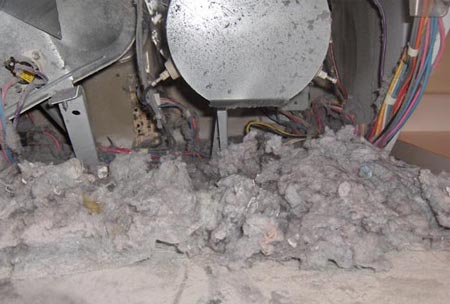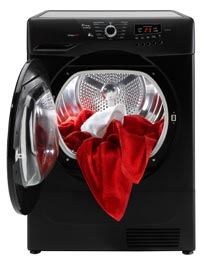Maintain your tumble dryer
Did you know that a tumble dryer should have a venting system fitted so that moist air is not circulated into the home? In most other countries a tumble dryer is fitted with a vent hose that is connected to the back of the machine and through the wall to purge moist air outdoors.
A tumble dryer has a rotating drum. Heated air circulates through and around the drum to evaporate moisture from wet clothing. The 'tumbling' motion of the drum serves to separate items and ensure proper circulation while the machine is in use.
Cool air is drawn into the machine and hot, humid air vented out through the back of the machine. This continuous drawing in and venting allows a tumber dryer to function within normal limits.
If your tumble dryer does not vent humid air out of the home, you increase the likelihood of mould, mildew, and bacterial growth inside a home.
As a byproduct of tumble drying, lint from washing is normally collected in a filter located inside the drum. This filter needs to be removed and cleaned regularly. A filter that accumulates excess lint not only decreases energy efficiency by slowing down the drying process and using more electricity, it is also a safety hazard as it could result in excess overheating, and possibly fire. Most people assume their lint traps catch all the lint, however, a significant amount of this lint is not caught by the lint trap and builds up inside the dryer - even on the heating element and in other places inside the dryer, causing it to overheat and possibly catch fire. As a rule, a fire starts from a spark in the machine. However, improper clothes dryer venting practices outside the dryer can play a key role in this process.
As one of the most costly applicances to run, it makes sense to check that you filter is clean every time you use your machine.
If your tumble dryer is not vented, you should also check the back of the machine to ensure that lint is not building up over air circulation vents.
Do not overload
Most tumble dryers are designed for a 5kg load, anything less and you are wasting energy. As one of the most expensive home appliances to run, smaller loads consume just as much electricity as a full load. It pays to wait until you have a full load before drying washing.
Overloading a tumble dryer is defnitely not advised, as a packed drum means less room for wet washing to be tumbled. This not only means that washing takes far longer to dry, but also that overheating may occur.
General maintenance tips
- Clean the lint filter every time you use the machine to maintain good airflow and energy efficiency. Wipe the inside of the drum with a damp cloth regularly.
- Provide adequate ventilation around the dryer. Preferably vent the drier through an exterior wall.
- Do not put rubber, foam or plastic items into a tumble dryer - or anything that has had a flammable substance spilled on it.
- Do not leave a dryer running overnight or when you leave the house.
- Separate out fabrics and dry similar clothes together. This reduces the drying time and increases the evenness of drying, and loosen laundry when you take it out of the washing machine to prevent lengthy running times and creasing.
- Don't dry large objects, such as duvets as this can cause overheating.
Click here for troubleshooting a tumble dryer
[ janice anderssen - images: dh condo services ]




